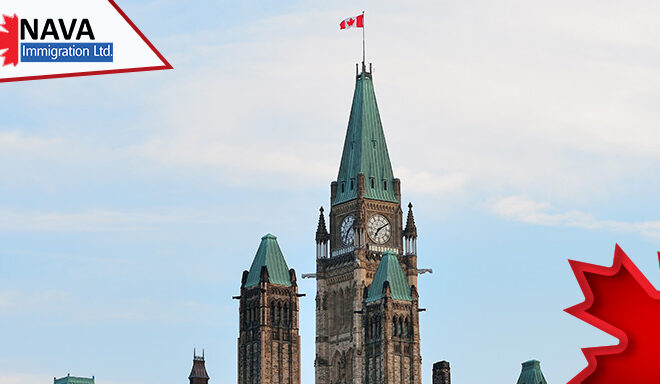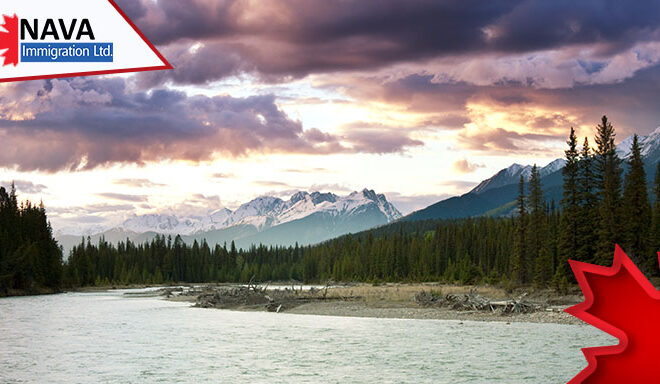Updates on Ministerial Meeting and PNP Draw in Canada
Recently, Canada’s Immigration Minister, Marc Miller, convened with provincial and territorial immigration ministers in Toronto to explore mutual goals and areas to focus on. In addition, four Canadian provinces also held the PNP draw. Discover the updates on ministerial meeting and PNP draw.
The ministerial meeting occurs twice a year and creates an FMRI. FMRI stands for the Federation of Ministers Responsible for Immigration. It’s a decision-making body that supports a flexible, timely, and effective immigration system for Canada. The mission of this body is to promote joint immigration priorities and improve immigration policies and programs in the country.
Updates on Ministerial Meeting and PNP Draw: What the Meeting Was About?
After the meeting, IRCC’s Minister revealed the results of the meeting in a press conference. He repeated several points raised during the launch of the Immigration Levels Plan 2024-2026. He further explained that the department expects that the Plan will help Canada create sustainable population growth and also welcome high-demand workers in the construction and healthcare sectors.
In addition, the federal and provincial immigration ministers also issued a statement outlining important areas of discussion. This includes the following:
- Minimizing the overlap between the federal and provincial economic class immigration programs. Also, lowering their processing times.
- Encouraging French-proficient immigration throughout Canada, especially outside Quebec.
- Establishing and implementing a more responsive and customer-focused economic immigration system.
- Streamlining the foreign credential recognition process and lowering potential barriers.
- Exploring collaborative government approaches to manage housing, infrastructure, and social services pressures.
- Evaluating the potential expansion of settlement services eligibility. This is particularly for asylum seekers and temporary residents on a path to attain permanent residence.
- Enhancing the Credibility of Canada’s International Student Program
- Harmonizing work permits with labor market demands of provinces and territories.
Multi-year Immigration Levels Plan for PNP
FMRI’s most recent meeting was held in Halifax in March this year.
During the meeting, the ministers discussed the approval of the multi-level immigration plan for the Provincial Nominee Program (PNP). This means that provinces and territories will get the PNP allocations three years in advance.
Prior to this, the PNP allocations of only one year were announced for the provinces that they can admit to the local regions.
A multi-level plan is believed to benefit the provinces. It can ensure that they can offer sufficient settlement services for new immigrants. This includes housing, healthcare, and other infrastructure. Additionally, it also balances the requirements of individuals already residing in the Province.
Furthermore, the ministers also considered other pertinent issues. These include strengthening the recognition of international education and facilitating the easy entry of specific professionals into the Canadian labor market. These include healthcare and construction occupations.
In the meeting, ministers also discussed expanding the Rural and Northern Immigration Pilot Program and the Atlantic Immigration Program.
Canada’s Newly Released Immigration Strategy
Canada recently released a new immigration strategy called An Immigration System for Canada’s Future. The provincial preferences typically accord with the federal government.
In its latest strategy, IRCC emphasized the importance of heightened discussion with the provincial government and other partners.
This approach aims to establish a comprehensive government strategy that fosters sustainable immigration levels. This will help in enhancing Canada’s workforce and economy.
The Canadian government also used this approach in the development of its latest Immigration Levels Plan 2024-2026. Canada hopes to accept up to 500,000 new PR each year in 2025 and 2026. A total of 110,000 newcomers will enter Canada via the PNP in 2024, and 120,000 of them in both 2025 and 2026.
Canadian Immigration: A Shared Responsibility of Federal and Provincial Governments
Canadian immigration department works jointly with provincial and territorial governments. This is because immigration is a shared responsibility under the Canadian constitution.
The Immigration and Refugee Protection Act, or IRPA, is the law that governs Canada’s federal and provincial immigration system. As per IRPA), the provinces have the authority to choose the potential candidates. Provinces prefer candidates who they feel can effectively support regional economies and integrate well into the provincial labor market.
Still, the IRCC department has the authority to decide whether a nominated candidate will become a Canadian PR.
Notably, Quebec and Nunavut do not operate PNP. The Province has a separate agreement with the Canadian government. This provides it total autonomy over the economic immigration to the region.
Recent PNP Draw Results of Four Canadian Provinces
When exploring the updates on ministerial meetings and PNP draws, this section will give you insights into the outcomes of the recently held provincial nomination program draw. These draws occurred in four provinces prior to the recently held FMRI meeting. Nominating provinces include British Columbia, Manitoba, Prince Edward Island, and Alberta. The draw results are as follows:
British Columbia
British Columbia conducted five draws under the BC PNP. The draw occurred on November 16 and invited over 219 candidates.
Among all the draws, the largest draw targeted candidates in the Skilled Worker, International Graduate, and Semi-Skilled streams. BC invited 116 candidates in this draw, and the required minimum score ranged from 94-115, based on the stream.
The other four draws targeted International Graduates and Skilled Workers in specific professions. The minimum required score for these draws was 60. The following are the results of the draws:
- 59 Early childcare educators and assistants
- 32 Healthcare workers
- Less than five workers from other priority occupations
In addition, British Columbia also conducted its first targeted draw for candidates in the construction Occupations. BC invited 12 Skilled Workers and International Graduate candidates in this draw. The minimum required score that candidates needed to be eligible was 75.
Manitoba
On November 16, Manitoba held its PNP draws and invited 301 candidates to apply. The Province conducted four draws and targeted candidates in three streams. In a general draw, around 100 candidates received invitations to apply. The candidates were Skilled Workers in Manitoba, and the required score for this draw was 809.
Manitoba’s second draw was the occupation-specific draw and targeted Skilled Workers. It considered a range of NOC codes occupations from different sectors, including healthcare, education, and home care.
The remaining two draws invited 61 candidates from the International Education stream and 48 Skilled Workers Overseas. The lowest required score for these two draws was 721.
Prince Edward Island
On November 16, PEI conducted draws under PEI PNP and invited 141 candidates. PEI issued invitations to 134 candidates in the Labour and Express Entry who are already working under the PEI employer. These candidates required a minimum EOI score of 55 to be eligible.
PEI also conducted a small draw targeting candidates in the Business Work Permit Entrepreneur. The Province invited seven candidates in this draw with a minimum score of 80. In the last 12 months, the Province has issued a total of 2527 invitations to candidates in these two streams.
Alberta
On November 7, Alberta invited 16 Express Entry candidates to its PNP draw. The targeted candidates were in the Dedicated Healthcare pathway and were also in the Alberta Job offer stream. The required eligibility score for this draw was over 300.
According to the Alberta Advantage Immigration Program (AAIP), candidates in the stream who had submitted their final application may be required to wait for a maximum of two months for the last decision on their application.
This was all about the updates on ministerial meeting and PNP draw of four Canadian provinces.





